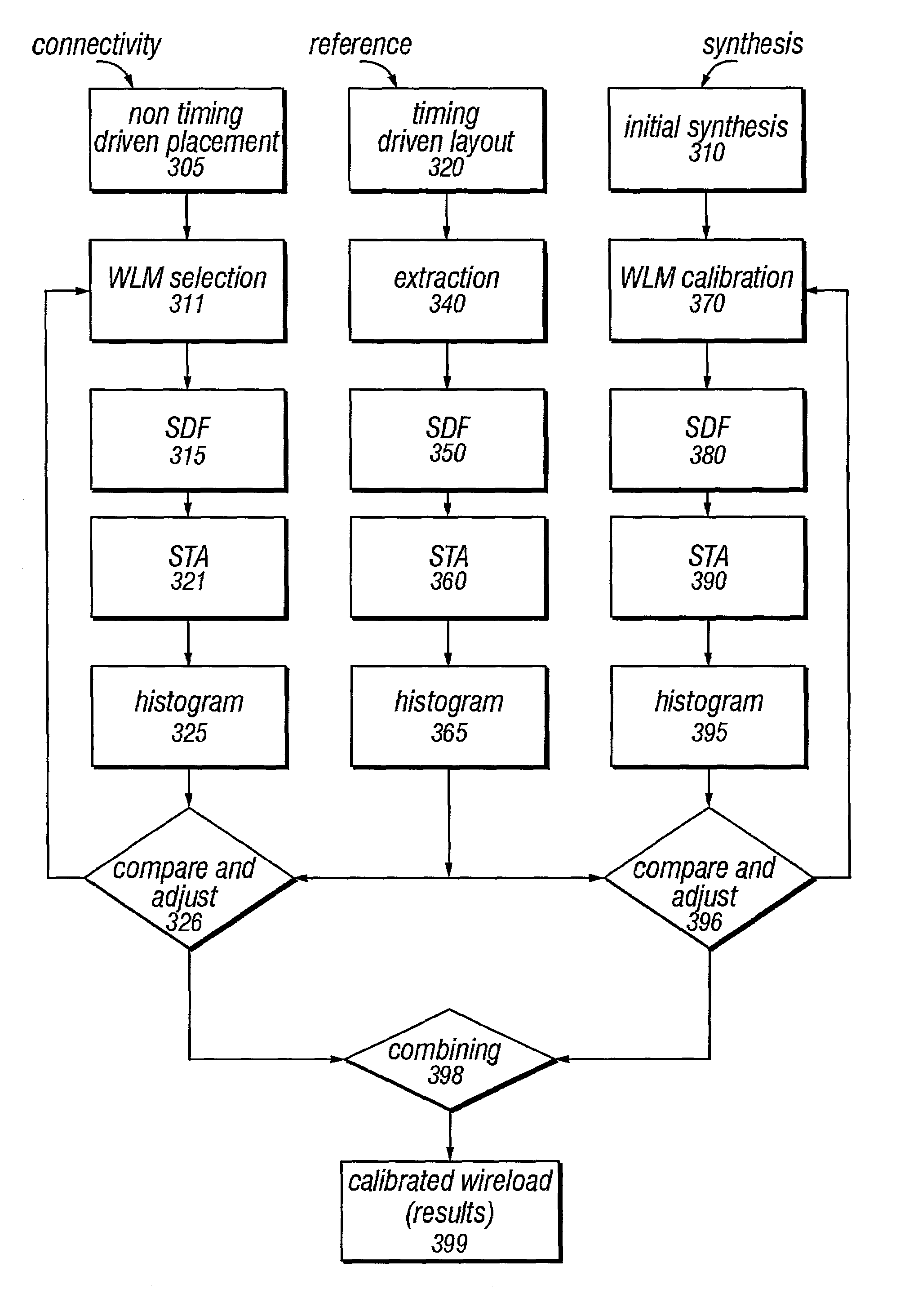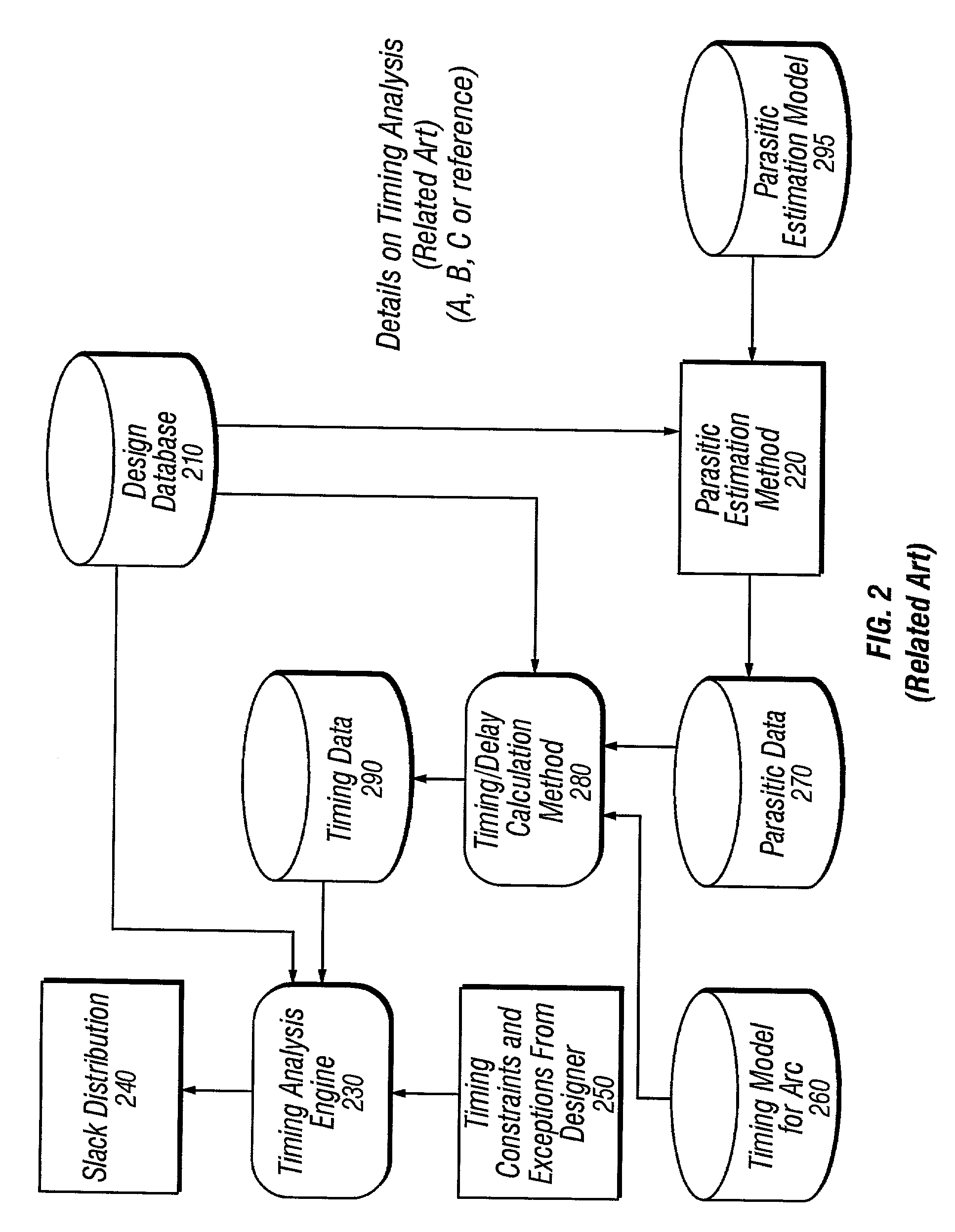Calibrating a wire load model for an integrated circuit
a wire load model and integrated circuit technology, applied in the field of calibration of wire load models for integrated circuits, can solve the problems of increasing the difficulty of characterizing, increasing the criticality of the wire load model, and increasing the time and money required to design, fabricate and test such integrated circuits
- Summary
- Abstract
- Description
- Claims
- Application Information
AI Technical Summary
Problems solved by technology
Method used
Image
Examples
Embodiment Construction
[0032]The following sets forth a detailed description of a mode for carrying out the invention. The description is intended to be illustrative of the invention and should not be taken to be limiting. As previously described, accurate timing management throughout the design process is necessary for an integrated circuit to operate correctly. The length of net connections in an integrated circuit determines the operating frequency, or speed, of the chip. The objective is a design with the shortest possible connections. Similarly, an integrated circuit with shorter net connections will be a smaller chip. A method to select the shortest possible connections will result in a design with the optimum solution for area and timing. The desired solution for area and timing produces a minimum of timing slacks with no timing violations.
[0033]The present invention provides timing correlation before and after layout and balances timing margins. Balancing the timing margin of an integrated circuit...
PUM
 Login to View More
Login to View More Abstract
Description
Claims
Application Information
 Login to View More
Login to View More - R&D
- Intellectual Property
- Life Sciences
- Materials
- Tech Scout
- Unparalleled Data Quality
- Higher Quality Content
- 60% Fewer Hallucinations
Browse by: Latest US Patents, China's latest patents, Technical Efficacy Thesaurus, Application Domain, Technology Topic, Popular Technical Reports.
© 2025 PatSnap. All rights reserved.Legal|Privacy policy|Modern Slavery Act Transparency Statement|Sitemap|About US| Contact US: help@patsnap.com



